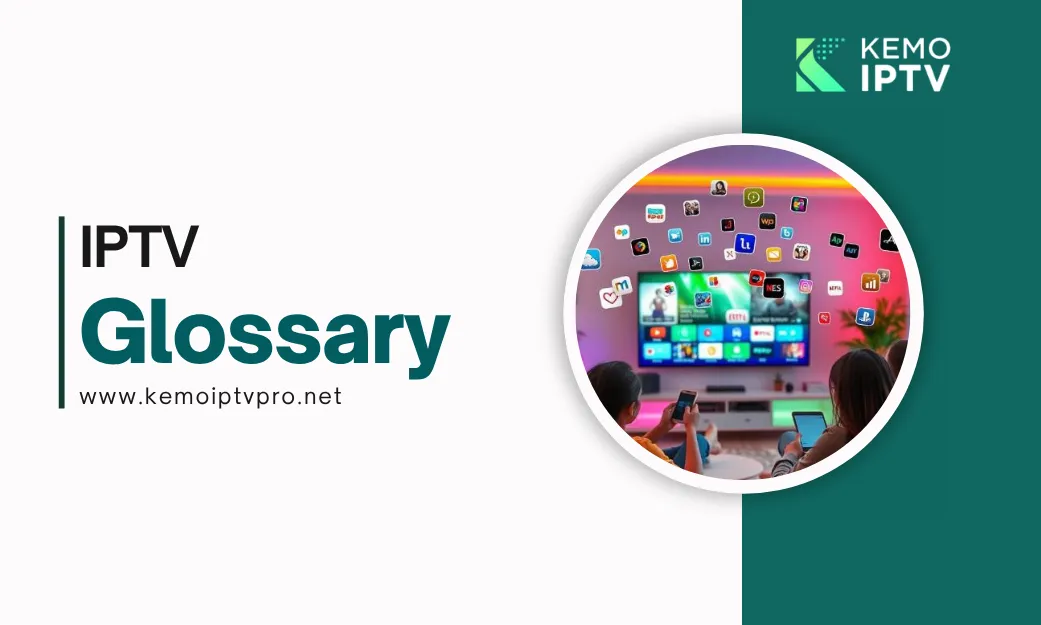The television landscape has undergone a dramatic transformation over the past decade. Traditional cable and satellite TV are giving way to internet-delivered content, fundamentally changing how we consume entertainment. At the center of this evolution are two distinct yet often confused technologies: IPTV (Internet Protocol Television) and OTT (Over-the-Top) streaming.
While both deliver video content over internet protocols, they represent entirely different approaches to network architecture, business strategy, and user experience. Understanding these differences is crucial for consumers navigating today’s complex media landscape and for industry professionals making strategic decisions. With OTT services reaching over 5.27 billion users globally and IPTV maintaining around 250 million subscribers worldwide, both technologies play significant roles in the modern entertainment ecosystem.
What is IPTV and How Does It Work?
Internet Protocol Television (IPTV) delivers television content over a managed IP network, typically operated by an Internet Service Provider (ISP) or telecommunications company. Think of it as cable TV delivered through your internet connection, but with the reliability and control of a private network.
IPTV operates within a “walled garden” – a closed, proprietary network ecosystem where the provider maintains end-to-end control. Content flows through dedicated bandwidth reserved specifically for video delivery, creating what’s essentially a private highway for television traffic. This controlled environment uses multicast technology to efficiently distribute live channels to subscribers, sending a single stream that’s replicated only where needed across the network.
The typical IPTV setup requires specific equipment provided by your service operator, most notably a dedicated set-top box that connects to your broadband connection. This device decodes the IP video streams for display on your television and provides access to features like electronic program guides (EPGs), cloud DVR functionality for recording live TV, and video-on-demand libraries.
Key advantages of IPTV include:
- Guaranteed quality of service with minimal buffering or interruptions
- Comprehensive channel packages including local channels and live sports
- Familiar TV experience with traditional channel surfing and scheduling
- Bundle opportunities combining internet, TV, and phone services
However, IPTV has limitations:
- Geographic restrictions – available only where your provider offers service
- Hardware dependency – requires provider-specific equipment
- Higher costs – typically comparable to traditional cable pricing
- Limited innovation due to closed ecosystem constraints
Examples of IPTV services include AT&T U-verse, Verizon Fios TV, and various telecommunications providers worldwide offering managed TV services over their networks.
What is OTT Streaming?
Over-the-Top (OTT) streaming delivers video content directly over the open internet, bypassing traditional distribution channels entirely. The term “over-the-top” refers to content going “over” the standard internet infrastructure without requiring specialized network management from your ISP.
OTT services work by hosting content on servers and delivering it through standard internet protocols, often utilizing Content Delivery Networks (CDNs) to cache videos closer to users. When you hit play, the service streams video in small chunks over the regular internet, using adaptive bitrate streaming to automatically adjust quality based on your connection speed and network conditions.
The beauty of OTT lies in its accessibility – any internet-connected device can become a viewing platform. Whether it’s a smartphone, tablet, smart TV, laptop, gaming console, or streaming stick like Roku or Amazon Fire TV, you simply install an app or visit a website to start watching.
Popular OTT services include:
- Subscription-based (SVOD): Netflix, Disney+, Amazon Prime Video, Hulu
- Ad-supported (AVOD): YouTube, Pluto TV, Tubi
- Live TV streaming: YouTube TV, Hulu + Live TV, Sling TV
- Transactional (TVOD): Apple TV for movie rentals, pay-per-view events
OTT advantages:
- Maximum flexibility – watch anywhere, anytime, on any device
- Cost-effective options – from free ad-supported to affordable subscriptions
- Vast content libraries with exclusive original programming
- Personalized experience with AI-driven recommendations
- Global accessibility reaching worldwide audiences
OTT challenges:
- Quality depends on internet connection – buffering during peak usage or slow connections
- Content fragmentation – need multiple subscriptions for comprehensive coverage
- Limited local content – fewer local broadcast channels by default
- Subscription management – juggling multiple services can become complex
Key Differences Between IPTV and OTT
1. Delivery Network and Infrastructure
The fundamental difference lies in network architecture. IPTV operates on a closed, private network managed by your service provider, ensuring dedicated bandwidth exclusively for television content. This managed approach allows providers to guarantee consistent quality and performance, similar to how cable companies control their networks.
OTT uses the open public internet, sharing bandwidth with all other online activities. Your streaming quality competes with everything else using your internet connection – from video calls to file downloads. While OTT services employ sophisticated adaptive streaming technology to optimize performance, they cannot guarantee the same level of consistency as IPTV’s managed environment.
This difference impacts scalability dramatically. OTT services can reach global audiences instantly by leveraging existing internet infrastructure and cloud services. IPTV expansion requires physical network buildout, making it geographically constrained and more expensive to scale.
2. Device Requirements and Accessibility
IPTV typically requires provider-specific hardware – usually a set-top box or approved smart TV with the provider’s software. Your service is often tied to your home’s internet connection and may not work outside your service area. While some IPTV providers offer mobile apps, functionality is generally limited compared to the full home experience.
OTT is device-agnostic, working on virtually any internet-connected device without special hardware. This portability allows seamless viewing across multiple screens – start watching on your TV at home, continue on your tablet during commute, and finish on your laptop at a hotel. OTT services typically support multiple concurrent streams, enabling family members to watch different content simultaneously on various devices.
3. Content Availability and Programming
IPTV excels at replicating traditional television with comprehensive live channel lineups, including local broadcast stations, news networks, and sports channels. The experience centers around linear programming with familiar channel guides, though modern IPTV services add interactive features like pause/rewind live TV and cloud DVR recording.
OTT initially focused on on-demand content but has evolved to include live programming. However, the OTT landscape is fragmented – different platforms offer different content libraries. To replicate a full cable-like experience via OTT, consumers often need multiple subscriptions across various services.
Content exclusivity plays a major role in OTT competition. Platforms invest billions in original programming like Netflix’s exclusive series or Disney+’s Marvel content. IPTV providers typically function as content aggregators, licensing existing channels rather than producing original content.
4. Quality of Service and Reliability
IPTV guarantees consistent streaming quality through its managed network approach. Bandwidth is reserved specifically for video traffic, minimizing buffering and maintaining stable resolution even during peak internet usage times. This reliability makes IPTV particularly valuable for live sports and time-sensitive content where interruptions are highly noticeable.
OTT quality fluctuates with internet conditions. During evening hours when neighborhood internet usage peaks, or on slower connections, viewers may experience buffering or automatic quality reduction. Advanced adaptive bitrate streaming helps by automatically adjusting video resolution to maintain smooth playback, but this means quality can vary throughout viewing sessions.
Latency also differs – IPTV typically delivers live content with minimal delay, while OTT streams often lag behind real-time broadcasts by 30-60 seconds due to internet routing and buffering requirements.
5. Pricing and Business Models
IPTV follows traditional subscription models with monthly fees comparable to cable TV, often bundled with internet and phone services. Pricing is relatively stable but typically higher than individual OTT services. However, one IPTV subscription provides comprehensive channel coverage.
OTT offers unprecedented pricing flexibility with multiple monetization models:
- SVOD services like Netflix at $10-15/month for unlimited access
- AVOD platforms like YouTube offering free content supported by advertisements
- TVOD options for renting individual movies or events
- Hybrid models like Hulu offering both ad-supported and ad-free tiers
While individual OTT services cost less, “subscription stacking” multiple platforms can quickly approach or exceed traditional TV costs. However, consumers can customize their entertainment spending by choosing only services they actually use.
Similarities Between IPTV and OTT
Despite their differences, IPTV and OTT share important characteristics that distinguish them from traditional broadcast television:
Both use Internet Protocol networks for content delivery instead of traditional broadcast methods like over-the-air signals, cable coax, or satellite transmission. This IP-based foundation enables interactive features impossible with one-way broadcast systems.
On-demand viewing capabilities exist in both platforms. IPTV services typically include video-on-demand libraries and cloud DVR functionality for time-shifting live content. OTT services are built around on-demand access, with some adding linear channels. Both free viewers from rigid TV schedules.
High-quality content delivery is supported by both systems. Whether delivered through IPTV’s managed network or OTT’s adaptive streaming, both can provide HD and 4K video with surround sound when properly configured.
Multi-device support is increasingly common. While IPTV traditionally focused on TV viewing, many providers now offer mobile apps and web access. OTT is inherently multi-device. Both allow some degree of viewing flexibility across different screens.
Interactive features like content recommendations, user profiles, and pause/resume functionality are standard in both environments, representing a significant evolution from traditional passive television consumption.
Market Trends and Future Outlook
The data reveals dramatically different growth trajectories. OTT dominates with approximately $399 billion in global market value and over 5 billion users, compared to IPTV’s $187 billion market and 250 million subscribers. OTT’s projected growth rate of 24.4% CAGR significantly outpaces IPTV’s 17.8%, indicating continued expansion of streaming adoption.
However, IPTV isn’t disappearing. It’s actually gaining subscribers in regions with strong telecommunications infrastructure, particularly in Asia-Pacific markets. IPTV is considered the “winner” among traditional pay-TV formats, adding an estimated 36 million subscribers between 2023 and 2029.
The future points toward convergence rather than competition. Telecommunications providers are integrating OTT apps into their IPTV platforms, while OTT services add linear channels and live programming. Technologies like 5G networks will improve OTT streaming reliability, potentially closing the quality gap with IPTV.
Emerging trends include:
- Hybrid services combining IPTV reliability with OTT flexibility
- 5G enabling higher-quality mobile streaming that rivals fixed connections
- AI-driven personalization improving content discovery across both platforms
- Interactive content expanding beyond traditional passive viewing
- Edge computing reducing latency for both delivery methods
Conclusion: Choosing the Right Service for You
Neither IPTV nor OTT is universally superior – the best choice depends on your specific needs and priorities. IPTV suits viewers who value reliability, comprehensive live TV packages, and don’t mind location-based service restrictions. It’s particularly appealing for sports enthusiasts who demand consistent, high-quality live broadcasts and households preferring traditional channel-surfing experiences.
OTT appeals to viewers prioritizing flexibility, cost control, and on-demand content. It’s ideal for mobile lifestyles, cord-cutters seeking alternatives to traditional TV bundles, and audiences interested in exclusive streaming content.
Many households now use hybrid approaches – perhaps maintaining an IPTV subscription for live sports and local channels while adding specific OTT services for exclusive shows and movies. This mixed strategy leverages the strengths of both technologies.
The television industry’s evolution continues accelerating, with the lines between IPTV and OTT increasingly blurred. Rather than one technology completely replacing the other, we’re witnessing their convergence into a more flexible, personalized entertainment ecosystem. The ultimate winners are consumers, who now enjoy unprecedented control over what, when, where, and how they watch television content.
As we move forward, the distinction between delivery methods may become less important than the quality and relevance of content itself. Whether delivered through managed networks or over-the-top, the future of television is undeniably internet-based, interactive, and increasingly tailored to individual preferences.




